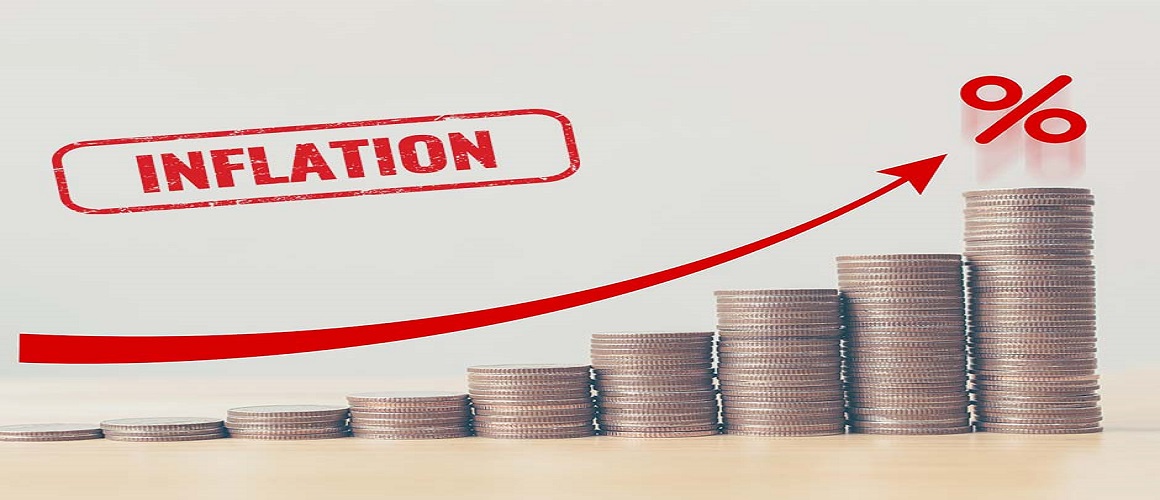The Rise of R&D as the Saviour of the FMCG Industry
04/07/2022 10 min read

It is fascinating how R&D (Research and Development) has taken over the business market and continues to be the primary step to developing new products or redefining existing ones. But what is R&D and how is it relevant? Let us look at how Research and Development encompass the business sector and establish itself as the first step toward a successful outcome. From theorizing and conceptualizing, it moves to exploration and experimentation, ending with an innovative design and development. R&D is a process considered redundant across all sectors of the economy. With correct marketing strategies, a business can use R&D to develop new products and services and reshape the existing ones.
Looking Ahead: The Future of “Innovation Is the Key to Success”:
Innovation is a contributing factor to the evolution of productivity in firms. With the ever-growing demands in the Fast-Moving Consumer Goods (FMCG) industry, during the advent of the pandemic and a change in customer behavior, R&D is the foremost innovative factor industries require to work on. Companies, now more than ever, require to efficiently address the customers’ changing requirements and occasions. Strategically improving the functionality of innovation in the target and adaptation according to these changes is the need of the hour.

To get FREE report on the above market Click Here.
Analyzing over 50 Innovation trends, we have discovered the crucial element is sustainability, followed by biodiversity and ecosystem, all throughout the market. Based on SkyQuest’s research, it can be established that Open Innovation in the FMCG sector contributes to a wide variety of holistic business processes, some of which are, sustainability (environment & packaging), tackling plastic pollution, IoT (Internet of Things), digitalization, AI (Artificial Intelligence), retail execution, emerging technologies, improvement of existing products, zero waste, biodegradability, manufacturing efficiency, technological advancements, and reduction of carbon plastics.
Some innovation trends which are currently transforming the face of FMCG range from creating digital business to business networks, shortening sale cycles, traffic monitoring, and a shift to augmented reality in showcasing their products and service. Leading companies to make better data-driven decisions, SkyQuest Technologies’ mission is to research and track markets and companies and provide a comprehensive overview of developing innovations in a certain industry as well as early identification of relevant start-ups and scaleups.
Why Should You Invest in R&D?
If you are confused about how much change is required in the proper allotment of your budget to get maximum return, let us help you walk you through it. Having an R&D strategy is a get-go to taking your company to the next level and having a chance to place yourself among the top 50 global FMCG companies. Creating and improving your products is not the only goal of R&D. If you dive deeper, you will find multiple benefits of a correct R&D strategy that can make your company or a flawed one that can break it. Although the creation of innovative and unique products is the primary goal of R&D, there are other perks that investing in it brings to the table. To remain competitive in the market, creating only one unique product will not help but it is paramount to constantly create new ones. Efficiency and productivity are two key factors that help a business sustain itself in a competitive market. A direct proportional concept is found, wherein the more you invest in R&D the more investors you attract. Establishing your company as growth-driven opens it to multiple investors who are drawn to your efficiency in managing productivity and profitability. The more innovative your ideas and products are, the more opportunities there are for merges and acquisitions.
An in-depth analysis shows that following the impact of the pandemic, Healthcare has been topping the list of the top sectors to spend the most on R&D investments in 2020. It is followed by Computer and Electronics and a skyrocketing increase in Software and Internet is noted right behind it. It is necessary for any novice as well as experienced firm to know the relation between the R&D investments and the revenues generated for the maximum returns benefited from their investments.
4 Things You Didn’t Know about R&D Investments:
1. Mergers and Acquisitions (M&A) Play a Pivotal Role:
On analysis, it was found that Mergers and Acquisitions (M&A) distinctly affect a business’ decision on research, development as well as innovation. Reports say that sometimes small firms are acquired by large ones to jumpstart innovation. Consequently, such small firms engage in R&D for potential incentives. Common goals in achieving and producing inputs, outputs, performance as well as organizational structure are found among the M&As. The current trend by large firms is to outsource small firms to invest in R&D and thereupon acquire them without juggling any risk factors.
2. Key Findings from Year-on-Year Growth in R&D Investments Analysis:
Adhering to the turbulence caused by COVID-19, many R&D investors were more positively impacted than negatively. During the year 2020-21, while the firms like Walgreens Boots Alliance Inc, Henkel AG & Co., Kimberly Clark Corp, British American Tobacco plc, and L’oreal S.A. have undergone a decrease of 5%, 4%, 3%, 2%, and 2% respectively, many firms have encountered a growth. Companies like The Proctor & Gamble Company recorded a 2% increase in R&D investment over the year 2020-2021, Archer-Daniels-Midland Company encountered a 7% increase in the R&D investment, Unilever observed an 8% increase, Tyson Foods Inc. and The Estée Lauder Companies Inc. both with a 16% increase, followed by Kraft Heinz with an 18%, increase and so on.
The impact of COVID-19 affected the stock market and its performance when stakeholders and investors had difficulty in determining whether to invest in R&D over other priorities. This represented a sharp decrease in the R&D investments by some firms, whereas, others firms saw growth due to the global push towards digitalization. The demand for consumer packaged goods (CPG) rose as consumers deemed it necessary to stockpile foods, household goods, and personal products at the advent of the pandemic. A classic example of a firm producing consumer-packaged goods (CPG), Pepsi Co observed a 5% increase in R&D investments.
3. Does Vilmorin & Cie SA have the highest R&D Intensity in 2021?
R&D intensity refers to the ratio of a company’s investment in R&D and revenue earned by it during a said year. An especially common feature of the FMCG industry is to spend a good portion of the revenue earned on R&D. Looking at the list of the Top 50 R&D Spending Companies, it is evident that many companies indulge in investing a positive share of their revenue in research and development. In the year 2021, we observed that the average R&D intensity of the Top 20 FMCG Companies is 2.9%. Companies such as LO’real, Kirin Holdings, Kao Corp., Kerry Group, Shiseido, and Vilmorin are perceived to have the topmost R&D intensity in 2021 while some others like P&G, Nestle, and Unilever recorded a lower average intensity. Vilmorin & Cie SA has registered the highest R&D Intensity rate in 2021, rising as high as 16.47%, followed closely by KWS Saat SE with 15.09%. It is distinguishable from the others whose intensity rate ranges between 1% and 6% only.
4. What Does Our Detailed Patent Analysis Say?
If you are wondering what a patent is, it is a right that a patent holder is granted allowing innovators to take exclusivity of any new idea, product, or service they develop and earn revenue from it. SkyQuest analyses such patents and the authentic R&D investments made by the top players in the FMCG industry. A textual analysis is followed to connect the patents to the investments. Studying the dataset for the last 6 years (2016-2022) it can be concluded that The Proctor and Gamble Company, the highest revenue-generating company has successfully filled the highest number of patents. The following companies are L’oreal SA, Henkel AG & CO., Unilever, and so on.

To get FREE report copy of R&D in FMCG Industry Click Here.
How is Unilever dominating the competition on the Top 50 Global Players list?
Making M&A the primary source of innovation, several big players focus on acquiring as a growth strategy to keep from investing in R&D or risking their primary market. The prime example is Unilever N.V., reporting the maximum number of M&As, rising to as many as 32 between the years 2016 and 2021! It rose to the charts by making 2 acquisitions in 2021, 4 in 2020, 10 in 2019, 6 in 2018, 8 in 2017, and 2 in 2016. The study shows, that Unilever N.V. has invested a total of 0.98 billion in R&D in 2021. L’orea SA follows behind with as many as 13 acquisitions between 2016 and 2020.
Is the US Leading the List of Countries with the Highest Number of Headquarters?
On a thorough analysis of the non-exhaustive dataset of R&D in the FMCG industry, it is clear that the US is the dominating country in the global market when it comes to computing the number of headquarters established in it. Globally, as impressive as 23 leading companies have their headquarters in it. It is followed by Europe with 15 headquarters and Japan with 8 and India with only 1. Currently, the US has risen to the top in the global top 50 FMCG players list for 2021 on this ground. On the list of the top revenue generators of 2021, a whopping 48.9% of revenue has been claimed by these US-headquartered players in the space of the Top-50 FMCG Players. It records a total of 36.75% of R&D investments made, which is striking when compared to the top 50 FMCG players of 2021 that have invested in R&D.
Why is Food & Beverages Sector topping the chart of R&D investors?
From our detailed study, we observed that Food & Beverages segment has seen the maximum number of R&D investments in 2021. It has invested a whopping sum of 3.85 billion USD, followed by Household Products with 3.52 billion USD, Personal Products with 3.23 billion USD, and lastly, Tobacco with 1.81 billion USD. With revenue of 606.5 billion USD and 7.16 billion USD in R&D investments, the food and beverages segment is transcending the global market chart. Its R&D intensity stands at 1.17% with over 64,000 scientists and researchers expanding throughout the global market. With their well-funded research and development, they are innovating internally as well as externally by laying out their resources by nurturing smaller firms and start-ups. Innovative decisions include smart and eco-friendly packaging, balancing dietary restrictions, and diversifying options. They are constantly evolving their product portfolio by investing in innovative food entrepreneurs and small firms. One way of increasing the portfolio of the Food & Beverages sector is found in companies like General Mills, Tyson, Whole Foods, and Kellogg's which provide programs and expertise to such small start-ups urging them to create more innovative products.
How to Achieve Your R&D Goals in 2023
Are you an FMCG company that wants to allocate the R&D department constructively and profitably? Do you want to create a roadmap for your business till 2025? If your answers to these are “yes”, you are in the correct place! SkyQuest helps you create your own unique report by analyzing what is best for your company post looking at the current trends and demands. SkyQuest’s ABIRAW (Advanced Business Intelligence, Research & Analysis Wing) is our Business Information Services team that collects, collates, co-relates, and analyses the data collected by means of Primary Exploratory Research backed by robust Secondary Desk research. SQ identifies the key trends of the market.
We provide lucrative insights into what will help your company maintain its profitability, by analyzing your budget, your revenue, your investments, and your returns. According to our analysis, we found that the companies in the FMCG sector are increasing the adoption of organic ingredients such as sustainable palm, banning tests on animals, and using a red tractor logo in agriculture. Sustainability is a key factor all industries are focusing along with an emphasis on waste reduction. For instance, Unilever scientists have collaborated with experts from the US Environmental Protection Agency on groundbreaking scientific approaches to better assess the safety of chemicals found in some consumer products without using animal data. “Green” and “Organic” are two terms synonymous with product creation expanding over all sectors of the market. Manufacturing companies are venturing into the Greenmarket, stressing environmentally friendly raw materials and end products. This leads us back to what exactly is FMCG industry spending on? You got it correct, the answer is R&D! Our detailed research shows an average company has ramped up spending its 4.2% revenue on R&D as compared to 3.6% from last year.
How do we arrive at this conclusion?
SQ’s analysts meticulously delve deep into the primary and secondary data to analyze what is best for your company and how we will focus on achieving your R&D goals. Besides primary sources, our analysts procure information from various secondary sources used including financial filings, sustainability reports, company websites, trade databases, and paid databases such as Hoover’s, Bloomberg Business, Factiva, and Avention. Our team has conducted in-depth interviews with The Global Top-50 FMCG Player’ incumbents which included several stakeholders such as Brand Managers, customers, key opinion leaders, etc.
By following the four key points of R&D and its trends for the last 6 years (2016-21), they deduce the end result by placing appropriate data points in market spaces. Further, they validate and re-validate their findings and procure a detailed report to help you establish your name among the top players in the current market. This validated report is further sent to the Quality Assurance team to ensure adherence to style guides, consistency & design. SkyQuest uses exchange rates to convert income statements and balance sheet figures to U.S. dollars for non-U.S. companies to help you understand the conversion and the comparison.
What will your unique report include?
Your unique market report from SkyQuest will help you get an understanding of what is best for your company and ease your process of deciding how to construct a breakup of your budget. SQ’s tailored report contains information on the current state of the market and what is expected in the future, to make it hassle-free for you to make decisions based on the analysis performed by us. It covers a wide range of topics, including economic indicators, technological advancements, political changes, and more. According to SQ’s list of FMCG players, sectors taken into consideration are Food & Beverages, Personal Care Products, Household Products, and Tobacco. While not limited to these, SQ researches BFSI, Logistics, Livestock, Agriculture, Manufacturing, Life Science, Consumer Goods, Automotive, ICT, Consumer Packaged Goods, Chemical, and Healthcare sectors to provide you with beneficial insights. A detailed analysis of net sales of these FMCG Products is present with a focus on potential interest, dividends, and other income as required. A comparative approach is provided that gives an overview of the market and allows you to profile the current top players in the market. Furthermore, the Merger & Acquisition matrix, R&D intensity ratio metric (based on the revenue versus the R&D investment), and Innovation mapping procedures are followed and presented to understand the deep ecosystems of innovators, start-ups, academics, as well as strategic partners.
So, what are you waiting for? Discover what is happening in your industry based on how competition and consumer attitudes are changing. To benchmark your R&D budget to get your suitable returns, reach our analysts here for your own unique report today.





















 USA (+1) 351-333-4748
USA (+1) 351-333-4748
